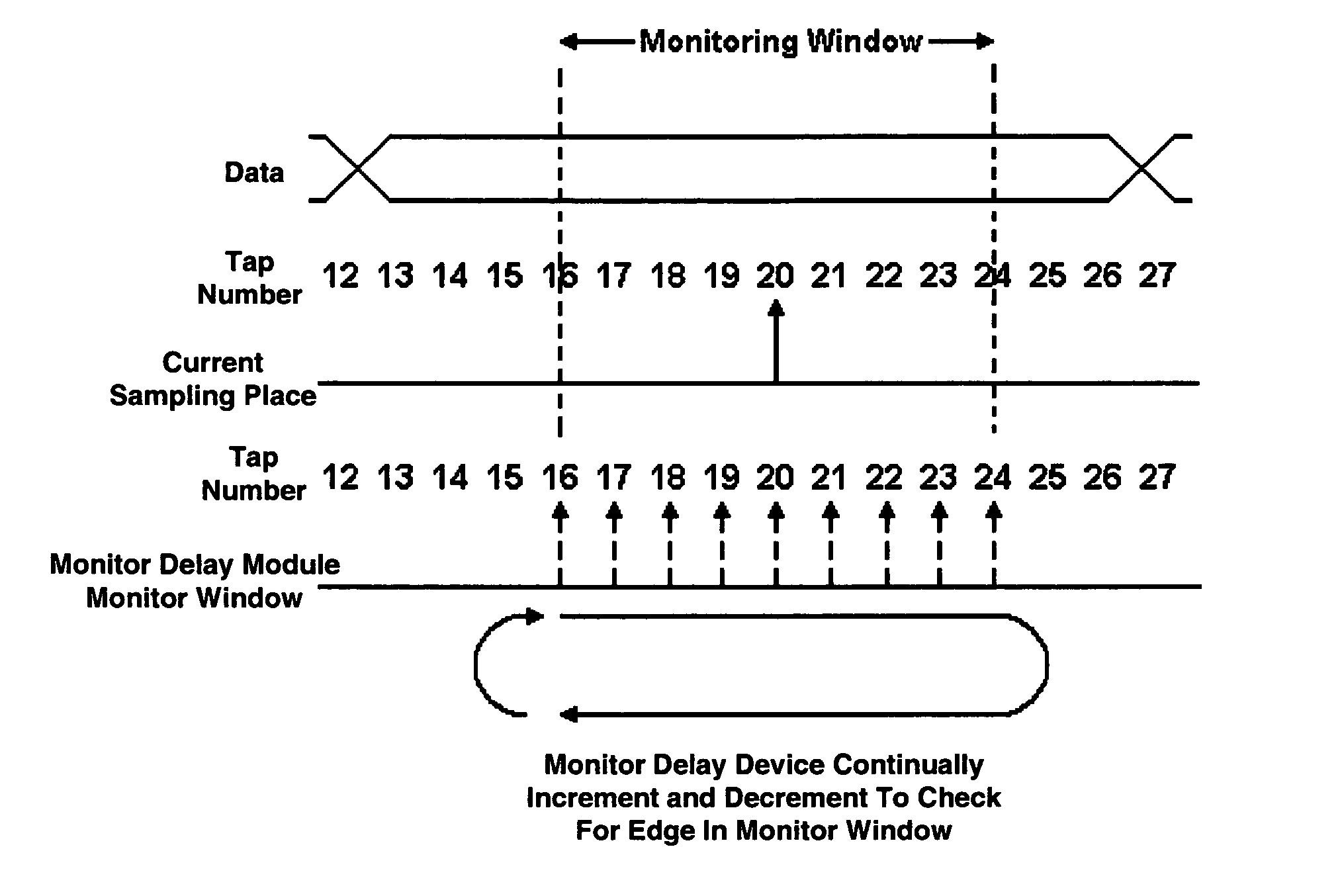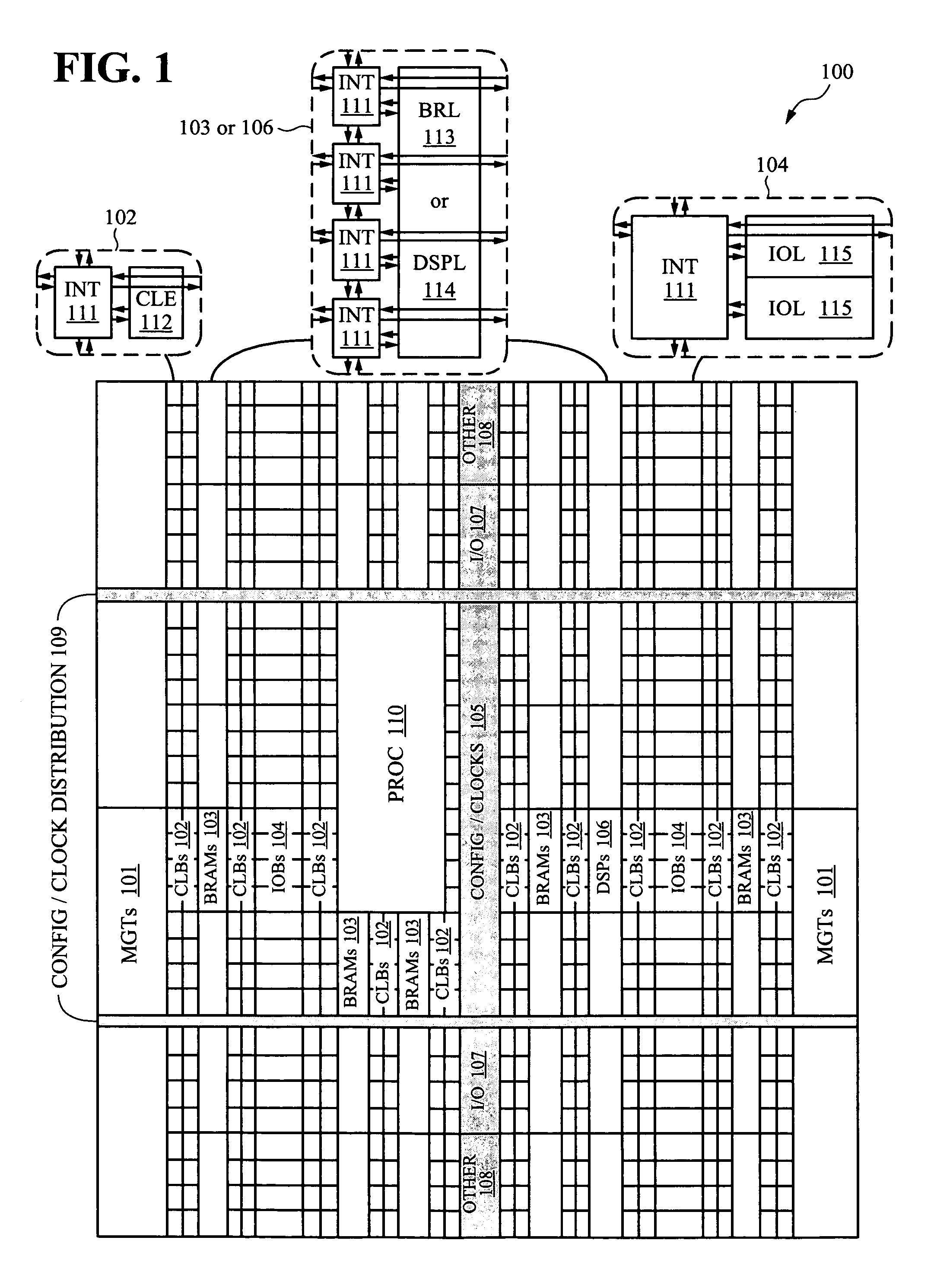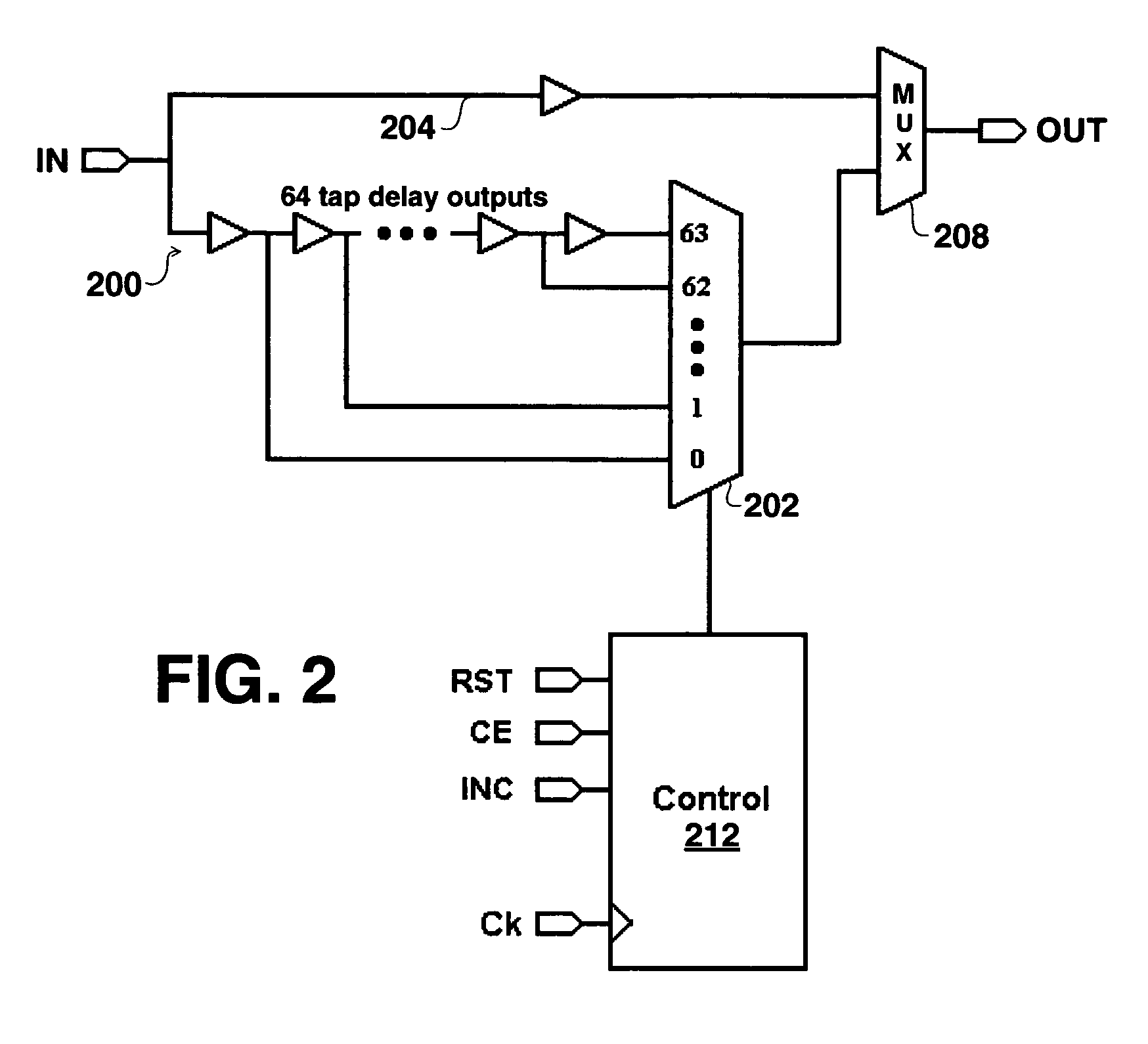Method of recovering data in asynchronous applications
a technology of asynchronous applications and data recovery, applied in the field of methods, can solve the problems of bit errors, no forwarding clock provided, and severely restricting the number of global clock buffers available for general us
- Summary
- Abstract
- Description
- Claims
- Application Information
AI Technical Summary
Benefits of technology
Problems solved by technology
Method used
Image
Examples
Embodiment Construction
[0029]A data recovery system that operates in an asynchronous environment according to embodiments of the present invention can be implemented with components in a general IC, or in a specific type of IC such as an FPGA. Although other ICs can be used, for reference when describing the embodiments to follow, the components will be described as provided in an FPGA.
[0030]FIG. 1, for reference, illustrates an overview of typical components included in an FPGA. The components include a large number of different programmable tiles including multi-gigabit transceivers (MGTs 101), configurable logic blocks (CLBs 102), random access memory blocks (BRAMs 103), input / output blocks (IOBs 104), configuration and clocking logic (CONFIG / CLOCKS 105), digital signal processing blocks (DSPs 106), specialized input / output blocks (I / O 107) (e.g., configuration ports and clock ports), and other programmable logic 108 such as digital clock managers, analog-to-digital converters, system monitoring logic,...
PUM
 Login to View More
Login to View More Abstract
Description
Claims
Application Information
 Login to View More
Login to View More - R&D
- Intellectual Property
- Life Sciences
- Materials
- Tech Scout
- Unparalleled Data Quality
- Higher Quality Content
- 60% Fewer Hallucinations
Browse by: Latest US Patents, China's latest patents, Technical Efficacy Thesaurus, Application Domain, Technology Topic, Popular Technical Reports.
© 2025 PatSnap. All rights reserved.Legal|Privacy policy|Modern Slavery Act Transparency Statement|Sitemap|About US| Contact US: help@patsnap.com



